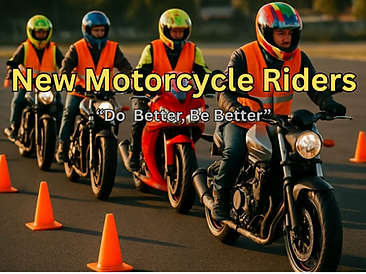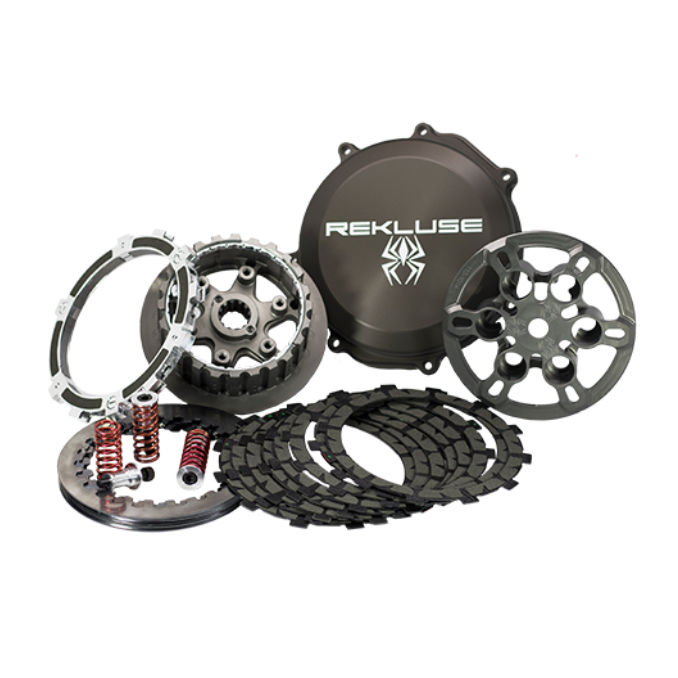Essential Tips for Older Motorcycle Riders and Riders with Disabilities
- NMR

- Sep 15
- 4 min read

Motorcycling is an exhilarating adventure that knows no age limits. For older riders and those with disabilities, the experience can be even more rewarding, providing a sense of freedom and connection to the open road. However, unique considerations must be addressed to ensure safety and enjoyment. This blog post will explore essential tips tailored specifically for older motorcycle riders and those with disabilities, helping you make the most of your riding experience.
Understanding Your Motorcycle
Choosing the right motorcycle is crucial for older riders and those with disabilities.
Consider Your Comfort
When selecting a motorcycle, prioritize comfort. Look for models with lower seat heights, wider seats, and adjustable handlebars. Cruisers and touring bikes often provide a more relaxed riding position, which can be especially beneficial for longer rides. For instance, the Honda Gold Wing has a seat height of only 29.3 inches and provides a plush seat, while the Yamaha VMAX is designed for comfort with its adjustable handlebar.
Test Ride Different Models
Before making a purchase, take the time to test ride various models. This will help you find a bike that feels right for you. Pay attention to how the motorcycle handles, the weight distribution, and how easy it is to maneuver. For example, a lightweight bike like the Kawasaki Ninja 400 weighs about 366 pounds, making it easier to control compared to heavier models.
Safety Gear is Essential
Wearing the right safety gear is vital for all riders, but it becomes even more critical for older riders and those with disabilities.
Invest in Quality Gear
High-quality helmets, jackets, gloves, and boots can significantly impact your safety and comfort. Research has shown that wearing a proper helmet can reduce the risk of head injury by 67%. Look for gear that offers protection without compromising mobility. Brands like Shoei and Alpinestars offer reliable options that balance safety and comfort.
Consider Adaptive Gear
For riders with disabilities, adaptive gear can enhance safety and comfort. Specialized gloves, grips, and helmets are designed to accommodate various needs. For instance, there are gloves with extra padding for better grip or helmets with communication systems for easier group riding.
Physical Fitness and Riding Skills
Maintaining physical fitness is essential for all motorcycle riders, especially older individuals and those with disabilities.
Stay Active
Regular exercise can improve your strength, flexibility, and balance, all crucial for safe riding. Consider engaging in activities such as yoga, swimming, or cycling. For example, a study showed that practicing yoga improved flexibility by over 35%, which is particularly beneficial for controlling your motorcycle.
Take a Riding Course
Even if you have experience, taking a refresher course can be incredibly beneficial. Organizations like the Motorcycle Safety Foundation offer courses specifically designed for older riders, focusing on techniques that enhance safety and confidence on the road.
Planning Your Rides
Planning your rides can significantly enhance your experience and safety.
Choose the Right Routes
Select routes that match your skill level and comfort. Avoid busy highways and opt for scenic backroads that allow for a more relaxed ride. For example, routes through parks or along lakes provide stunning views and an enjoyable atmosphere.
Take Breaks
Long rides can be tiring, so plan for regular breaks. Aim to take a break every 60 to 90 minutes. This allows you to stay alert and enjoy the journey. Use these breaks to stretch, hydrate, and assess your riding conditions.
Understanding Your Limitations
Being aware of your limitations is crucial for safe riding.
Know When to Stop
Listen to your body. If you feel fatigued or uncomfortable, it’s perfectly fine to take a break or even call it a day. Riding should be enjoyable, not a chore. Surveys indicate that approximately 40% of motorcycle accidents occur due to rider fatigue.
Seek Support
Don’t hesitate to ask for help if you need it. Whether it’s assistance with your motorcycle or advice from fellow riders, the motorcycle community is often supportive and eager to lend a hand. Connecting with experienced riders can provide valuable insights.
Staying Connected
Staying connected with other riders can enhance your experience.
Join Riding Groups
Consider joining local riding clubs or groups that cater to older riders or those with disabilities. These communities provide valuable support, camaraderie, and shared experiences. A study highlighted that riders who engage with groups report a 30% higher satisfaction level in their riding experiences.
Use Technology
Smartphone apps can help you stay connected with fellow riders, find routes, and locate nearby services like gas stations or repairs. Tools like Google Maps and Waze provide real-time traffic updates and can make your riding experience smoother.
Wrapping Up
Motorcycling is a passion that can be enjoyed at any age and by individuals with disabilities. By understanding your motorcycle, investing in safety gear, maintaining physical fitness, planning your rides, and staying connected with the community, you can ensure a fulfilling and safe riding experience. Embrace the freedom of the open road, and remember that every ride is an opportunity for adventure and joy.
So gear up, hit the road, and enjoy the ride!






.png)



Comments